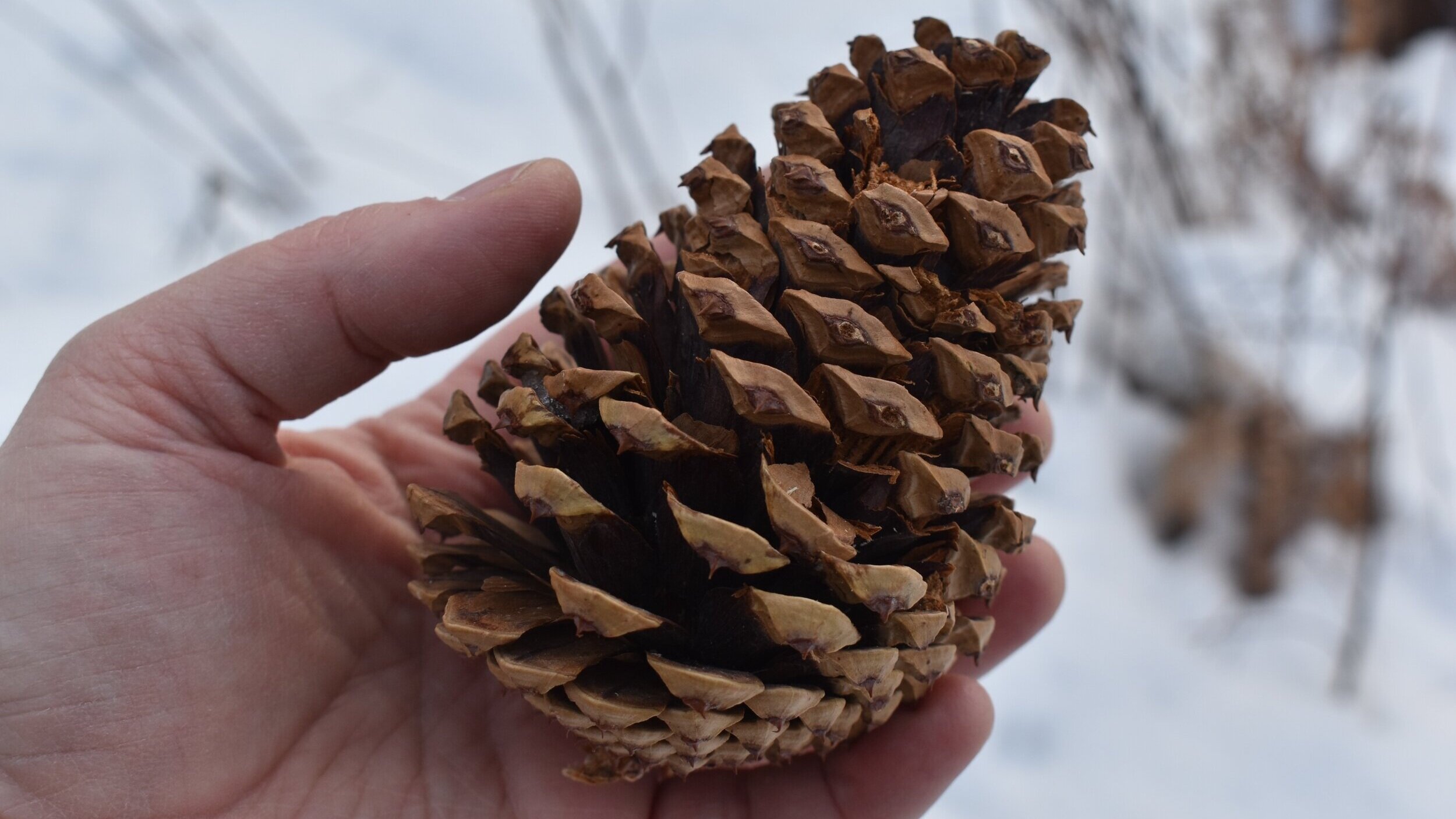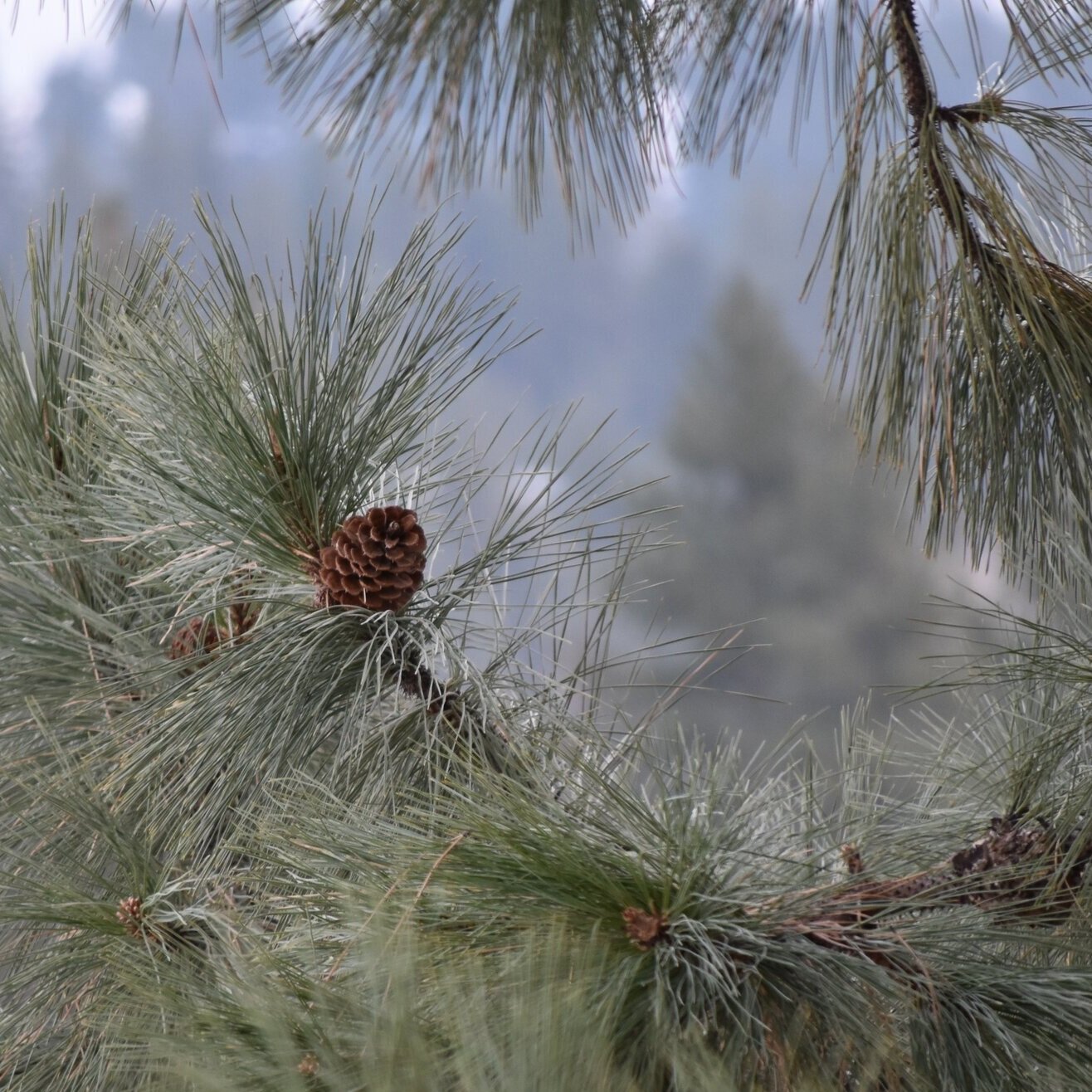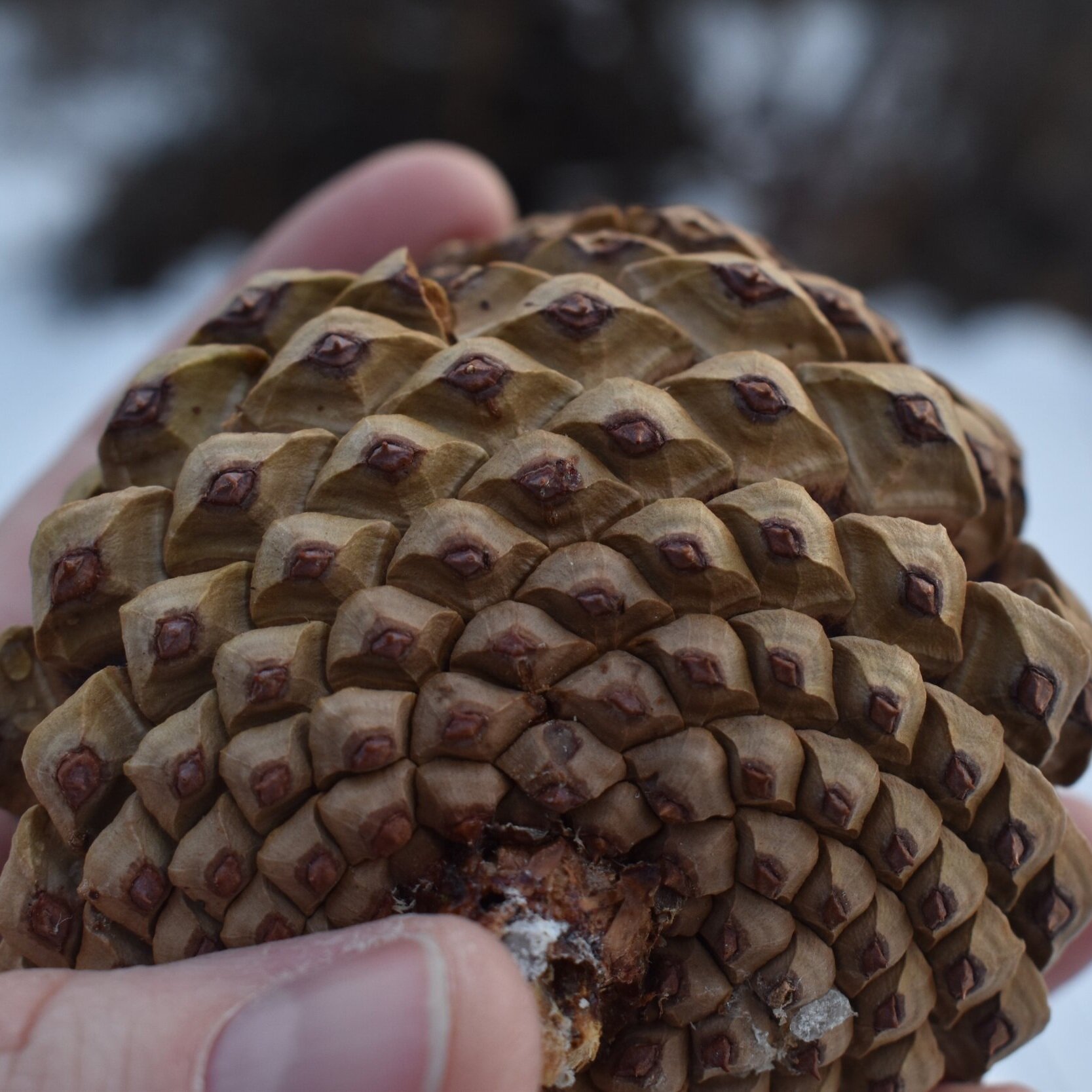Pine Cone Magic and Symbolism
I live in a place called Pine Valley in a house called Pine Cottage. Before moving to Eastern Oregon, I never lived among conifers. Now, they are an enormous part of my everyday life. Every single window in my home gives way to a Douglas or a Norway Fir. We are, in essence, surrounded.
And where there are pine trees — you guessed it — there are pine cones. They’re pretty ubiquitous and unassuming around here, but they possess deep meaning when we take the time to dig into their symbolism.
Throughout the span of recorded human history, pinecones have been a symbol of human enlightenment, resurrection, eternal life and regeneration.
Conifers are some of the oldest forms of plant life on earth. Researchers found traces of conifers dated back to 300 million years ago, while traces of pines can be dated back to 153 million years ago.
A LITTLE PINE CONE HISTORY
This stunning sacred geometry was recognized and revered by ancient cultures. The Mexican god “Chicomecoatl” is sometimes depicted with an offering of pine cones in one hand, and an evergreen tree in the other. Hindu deities are also often depicted holding a pine cone in outstretched hand. The Egyptian Staff of Osiris (1224 BC) depicts two spiraling snakes rising up to meet at a pine cone. And Ancient Assyrian palace carvings (713-716 BC) depict winged people holding pine cones. All of these depictions seem to use the pine cone as a symbol of spiritual consciousness and enlightenment, awakening, or immortality.
For my ancestors the Celts, pine cones represented regeneration and were used as a fertility charm. They would place them under their pillows at night (ooh la la!). And the ancient Romans associated pine cones with the goddess of love, Venus.
Speaking of Rome, the Catholic church uses the pine cone in its iconography as well. There is a pine cone carved into the holy staff that the Pope carries during religious ceremonies. And I’ll never forget seeing the gargantuan bronze pine cone statue at the Vatican in Rome.
GOLDEN SPIRAL, GOLDEN RATIO and FIBONACCI SEQUENCE
An evolutionary precursor to the flower, pine cones fan out in a Fibonacci spiral sequence in either direction. Now, I’m not a math-person, but the internet (and my high school geometry teacher Mr. Schimke) tells me that the Golden Spiral is a logarithmic spirals and its distinctiveness lies in the fact that it has Phi (golden ratio) as its growth factor. So for each quarter turn the spiral makes, it gets wider or away from the origin by a factor of Phi. Two quantities are in golden ratio (which is equal to 1.618) when their ratio is equal to the ratio of their sum to the bigger quantity.
This Golden Spiral and Golden Ratio are found everywhere in nature, from the growth pattern of leaves and flowers to the spirals of galaxies.
LIGHT, PINE CONES, and THE PINEAL GLAND
So the humble pine cone has spent centuries elevated as a symbol of all kinds of illumination. That makes sense to me because pine cones are very light sensitive. They close down in the dark and open in the light. My understanding is that this has to do with reproduction. Sunny days offer more arid conditions and the tiny seedlings nestled in the scales of the pine cone can become airborne more easily. Grey, rainy days aren’t ideal for spreading seeds, so the pine cone just closes up during damp weather conditions.
The pineal gland is a remarkable feature of the human experience. Nestled in the brain between the two hemispheres, it is a source of endless intrigue in the realm of mysticism. Sometimes the Pineal Gland is referred to as our “third eye” the “dream center” or my favorite, the “mystic seed.”
The Pineal Gland is shaped very much like the pine cone and lies at the center of our brain and is intimately linked to our body's perception of light. The Pineal modulates our wake-sleep patterns and circadian rhythms. Pretty cool, right?
I find it totally fascinating that both the pine cone and the Pineal Gland not only look like each other but are also light sensitive, light affected structures. Pure magic.
My altar for the Winter Solstice is full of pine cones in honor of their magic and symbolism. I hope that you too have a place to ritualize the magic of this amazing object and welcome the season of light.
I hope you all have a very happy Yule and a merry Christmas!


